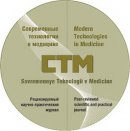
Determination of Optimal Ozone Doses on the Basis of the Assessment of Hemostasis System Parameters in Burned Patients
The aim of the investigation was to assess the effect of clinical ozone doses on blood coagulation in the treatment of burned patients.
Materials and Methods. The control group had 34 of apparently healthy people. The comparison group consisted of patients receiving standard infusion-transfusion therapy used in clinic unit of thermal injuries (n=58). The study groups included the patients with burn disease, who underwent an ozone therapy course of five ozone procedures against the background of conventional treatment methods. They were injected a single dose of ozone intravenously in the form of ozonized saline solution: 40–80 µg (n=10), 120–160 µg (n=10), 200–250 µg (n=13), and 500 µg (n=16). The hemostatic system condition was studied by the following parameters: thrombin time, prothrombin time, activated partial thromboplastin time, fibrinogen concentration, antithrombin III activity.
Conclusion. The burned patients under the influence of ozone therapy and depending on ozone dose showed varying degrees of marked changes in the hemostatic system. The most optimal dosage affecting the blood coagulation system appeared to be the dose of 120–160 µg promoting the reduction of fibrinogen concentration and increased antithrombin III activity.
- Presnyakova M.V. Informatsionnaya znachimost’ gemostaziologicheskikh narusheniy pri razvitii “rannego” sepsisa u tyazheloobozhzhennykh [Information value of hemostasiological disorders in “early” sepsis development in severe burned patients]. Ekologiya cheloveka — Human Ecology 2013; 3: 46–53.
- Kostina O.V., Peretyagin S.P. Sostoyanie trombotsitarnogo zvena sistemy gemostaza, pro- i antioksidantnogo potentsialov v dinamike ozhogovoy bolezni [The condition of platelet element of hemostatic system, pro- and antioxidant potentials in burn disease dynamics]. Klinicheskaya laboratornaya diagnostika — Clinical Laboratory Diagnosis 2011; 4: 33–35.
- Byshevsky A.S., Rudzevich A.Y., Shapovalov P.Y., Shapovalova E.M., Shidin A.V., Sulkarnayeva G.A., Bagumyan E.V. The connection between lipid peroxidation and thrombin-fibrinogen interaction. Fundamentalnie issledovania — Fundamental Researches 2009; 3: 4–6.
- Byshevskiy A.Sh., Vinokurova E.A., Galyan S.L., Dement’eva I.A., Zabara E.V., Zvereva I.V., et al. Vitaminy, lipidperoksidatsiya i gemostaz [Vitamins, lipid peroxidation and hemostasis]. Fundamentalnie issledovania — Fundamental Researches 2008; 3: 80–81.
- Piksin I.N., Makhrov V.I., Makhrov V.V., Tabunkov S.I., Byakin S.P., Stcherbakov А.V., Romanova N.V., Averina А.V. Izmeneniya sistemy gemostaza u bol'nykh tromboflebitom glubokikh ven nizhnikh konechnostey pri ozonoterapii [The change of hemostasis system in patients with thrombophlebitis of lower extremities deep veins in ozone therapy]. Sovrem Tehnol Med — Modern Technologies in Medicine 2011; 4: 173–176.
- Rozenfel’d M.A., Leonova V.B., Konstantinova M.L., Razumovskiy S.D. Samosborka monomernogo fibrina i agregatsiya fibrinogena pri okislenii ozonom [Self assembly of monomer fibrin and fibrinogen aggregation in ozone oxidation]. Biokhimiya — Biochemistry 2009; 74(1): 54–61.
- Gulieva M.G., Zeynalova E.I., Rafiev F.D., Figarova N.A., Pashaeva Sh.B. Ozonoterapiya [Ozone therapy]. Oftalmologiya: Elmy–Praktik Jurnal 2010; 2: 102–109.
- Stadtman E.R., Levine R.L. Oxidation. Annals of the New York Academy of Sciences 2000; 899: 191–208.
- Levin G.Y., Egorihina M.N. The role of fibrinpgen aggregation of platelets in burn injury. Burns 2010; 36(6): 806–810.
- Piryazev A.P., Aseychev A.V., Azizova O.A. Vliyanie okislitel’nomodifitsirovannogo fibrinogena na obrazovanie i lizis fibrinovogo sgustka v plazme krovi [The effect of oxidative modified fibrinogen on the formation and lysis of fibrinous clot in blood plasma]. Bull Eksp Biol Med — Bulletin of Experimental Biology and Medicine 2009; 148(12): 640–643.
- Ragino Yu.L., Baum V.A., Polonskaya Ya.V., Baum S.R., Nikitin Yu.P. Okislennyy fibrinogen i ego svyaz’ s narusheniyami gemostaza i funktsii endoteliya pri ishemicheskoy bolezni serdtsa i infarkte miokarda [Oxidized fibrinogen and its relationship with hemostasis disturbances and endothelial dysfunction during coronary heart disease and myocardial infarction]. Kardiologiia — Cardiology 2009; 9: 4–8.
- Azizova O.A., Pirzyaev A.P., Aseychev A.V., Shvachko A.G. Okislitel’naya modifikatsiya firinogena zamedlyaet ego prevrashchenie v fibrin pod vliyaniem trombina [Oxidative fibrinogen modification inhibits its transformation into fibrin under thrombin action]. Bull Eksp Biol Med — Bulletin of Experimental Biology and Medicine 2009; 147(2): 160–163.
- Stief T.W., Marx R., Heimburger N. Oxidized fibrin(ogen) derivatives enhance the activity of tissue type plasminogen activator. Thromb Res 1989; 56(2): 221–228.
- Barret J.P., Dziewuski P.G. Complications of the hypercoagulable status in burn injury. Burns 2006; 32: 1005–1008.
- Beljaev A.N., Beljaev S.A., Kostin S.V., Melnikova D.V., Chvastunov S.I., Buharkin A.V., Tserkovnov S.I. Pathogenetic correction of the hemostasis disorders at the acute obstructive cholestasis. Med Al’m — Medical Almanac 2010; 1(10): 136–140.










